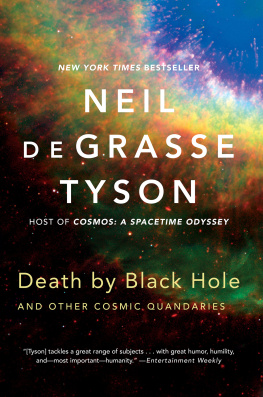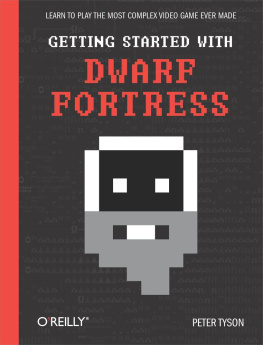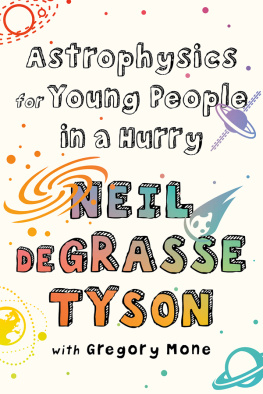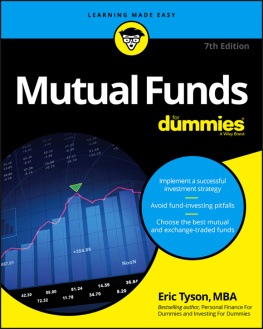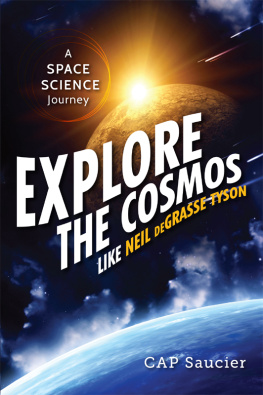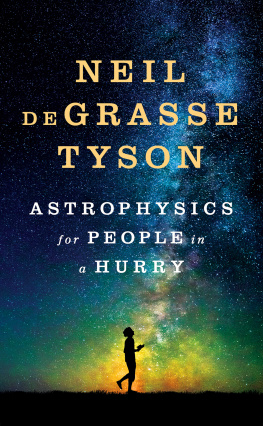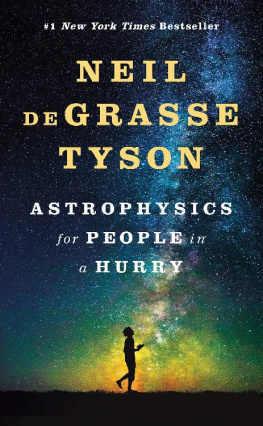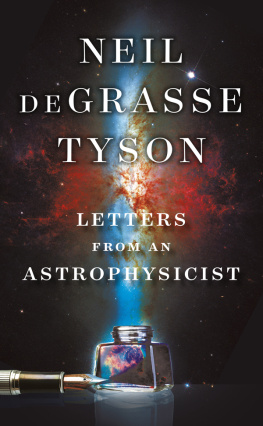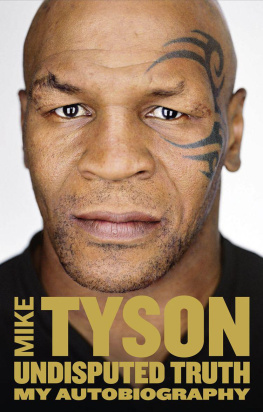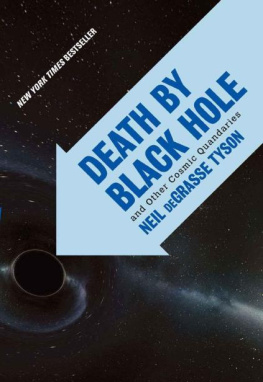NEIL DE GRASSE TYSON
DEATH BY BLACK HOLE
AND OTHER COSMIC QUANDARIES

W. W. NORTON & COMPANY
New York London
Copyright 2007 by Neil deGrasse Tyson
All rights reserved
First published as a Norton paperback 2007, reissued 2014
For information about permission to reproduce selections from this book, write to Permissions, W. W. Norton & Company, Inc., 500 Fifth Avenue, New York, NY 10110
Book design by JAM Design
Production manager: Amanda Morrison
The Library of Congress has cataloged the hardcover edition as follows:
Tyson, Neil deGrasse.
Death by black hole: and other cosmic quandaries / Neil deGrasse Tyson.1st ed.
p. cm.
Includes bibliographical references.
ISBN-13: 978-0-393-06224-3
ISBN-10: 0-393-06224-4
1. Black holes (Astronomy) 2. Cosmology. 3. Astrobiology. 4. Solar system. 5. Religion and science. I. Title.
QB843.B55T97 2007
523.8'875dc22
2006022058
ISBN 978-0-393-11378-5 (e-book)
ISBN 978-0-393-35038-8 pbk.
W. W. Norton & Company, Inc., 500 Fifth Avenue, New York, N.Y. 10110
www.wwnorton.com
W. W. Norton & Company Ltd., Castle House, 75/76 Wells Street, London W1T 3QT
CONTENTS
SECTION 1 THE NATURE OF KNOWLEDGE
The challenges of knowing what is knowable in the universe
SECTION 2 THE KNOWLEDGE OF NATURE
The challenges of discovering the contents of the cosmos
SECTION 3 WAYS AND MEANS OF NATURE
How Nature presents herself to the inquiring mind
SECTION 4 THE MEANING OF LIFE
The challenges and triumphs of knowing how we got here
SECTION 5 WHEN THE UNIVERSE TURNS BAD
All the ways the cosmos wants to kill us
SECTION 6 SCIENCE AND CULTURE
The ruffled interface between cosmic discovery and the publics reaction to it
SECTION 7 SCIENCE AND GOD
When ways of knowing collide
My own suspicion is that the Universe is not only queerer than we suppose, but queerer than we can suppose.
J. B. S. H ALDANE
Possible Worlds (1927)
PREFACE
I see the universe not as a collection of objects, theories, and phenomena, but as a vast stage of actors driven by intricate twists of story line and plot. So when writing about the cosmos, it feels natural to bring readers into the theater, behind the scenes, to see up close for themselves what the set designs look like, how the scripts were written, and where the stories will go next. My goal at all times is to communicate insight into how the universe works, which is harder than the simple conveyance of facts. Times arise along the way, as for the drama icon itself, to smile or to frown when the cosmos calls for it. Times arise to be scared witless when the cosmos calls for that, too. So I think of Death by Black Hole as a readers portal to all that moves, enlightens, and terrifies us in the universe.
Each chapter first appeared, in one form or another, on the pages of Natural History magazine under the heading Universe and span the 11-year period of 1995 through 2005. Death by Black Hole forms a kind of Best of the Universe and includes some of the most requested essays I have written, mildly edited for continuity and to reflect emergent trends in science.
I submit this collection to you, the reader, for what might be a welcome diversion from your days routine.
Neil deGrasse Tyson
New York City
October 2006
ACKNOWLEDGMENTS
M y formal expertise in the universe concerns stars, stellar evolution, and galactic structure. And so I could not possibly write with authority about the breadth of subjects in this collection without the careful eyes of colleagues whose comments on my monthly manuscripts often made the difference between a simple idea described and an idea nuanced with meaning drawn from the frontier of cosmic discovery. For matters regarding the solar system, I am grateful to Rick Binzel, my former classmate in graduate school and now professor of Planetary Sciences at MIT. He has received many a phone call from me, in desperate search of a reality-check on what I had written or what I had planned to write about the planets and their environments.
Others in this role include Princeton Astrophysics Professors Bruce Draine, Michael Strauss, and David Spergel whose collective expertise in cosmo-chemistry, galaxies, and cosmology allowed me to reach deeper into that store of cosmic places than would otherwise be possible. Among my colleagues, the ones who are closest to these essays include Princetons Robert Lupton, who, being properly educated in England, looks to me as though he knows everything about everything. For most of the essays in this volume, Roberts remarkable attention to scientific as well as literary detail provided reliable monthly enhancement to whatever I had penned. Another colleague and generalist who keeps watch over my work is Steven Soter. My writings are somehow incomplete without first passing them to his attention.
From the literary world, Ellen Goldensohn, who was my first editor at Natural History magazine, invited me to write a column in 1995 after hearing me interviewed on National Public Radio. I agreed on the spot. And this monthly task remains one of the most exhausting and exhilarating things I do. Avis Lang, my current editor continues the effort begun by Ellen, ensuring that, without compromise, I say what I mean and mean what I say. I am indebted to both of them for the time they have invested to make me be a better writer. Others who have helped to improve or otherwise enhance the content of one or more essays include Phillip Branford, Bobby Fogel, Ed Jenkins, Ann Rae Jonas, Betsy Lerner, Mordecai Mark Mac-Low, Steve Napear, Michael Richmond, Bruce Stutz, Frank Summers, and Ryan Wyatt. Hayden volunteer Kyrie Bohin-Tinch made a heroic first pass at helping me to organize the universe of this book. And I offer further thanks to Peter Brown, editor-in-chief of Natural History magazine, for his overall support of my writing efforts and for granting permission to reproduce the essays of my choice for this collection.

